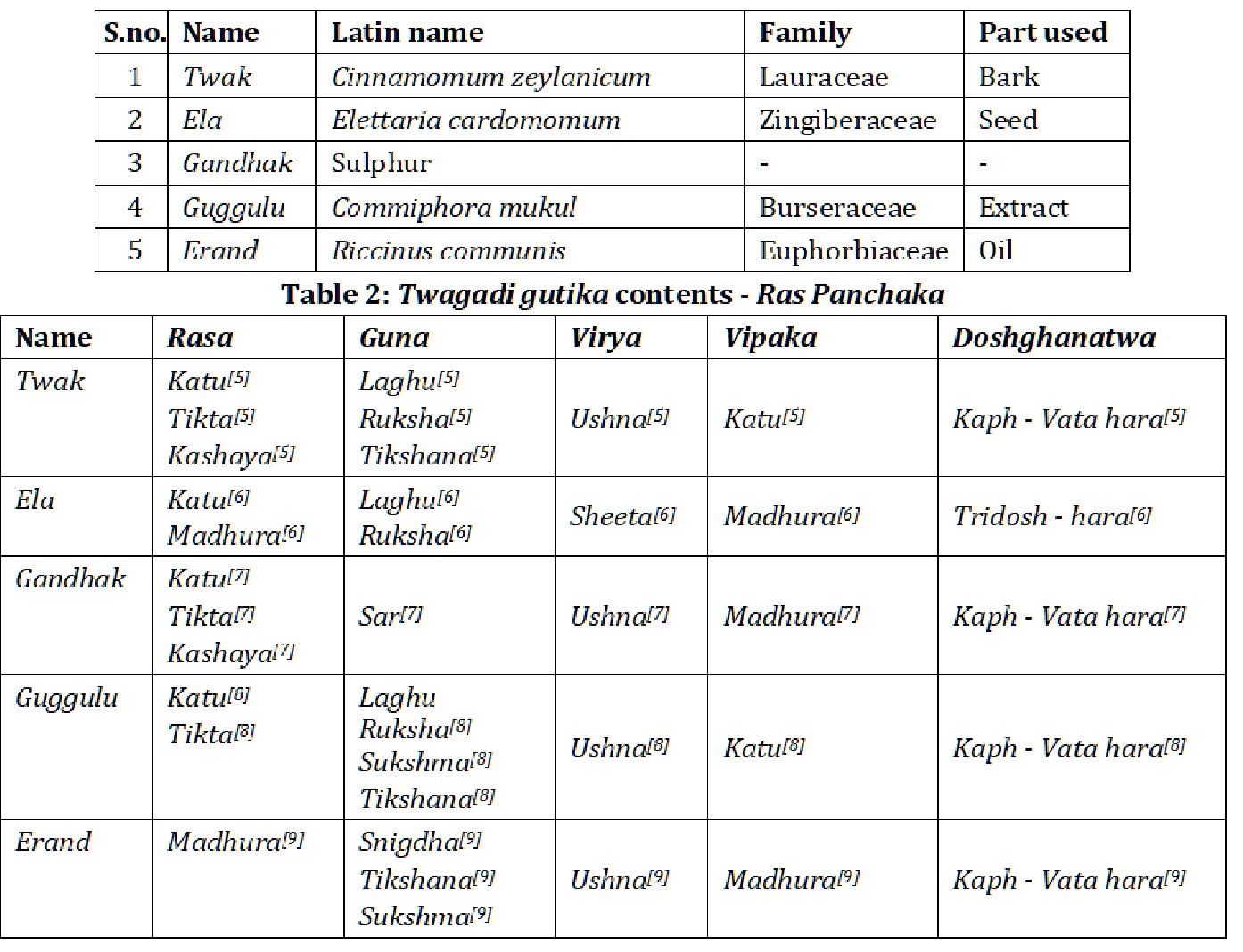Role of Twagadi Gutika in Pain Management
DOI:
https://doi.org/10.47070/ayushdhara.v11i1.1440Keywords:
Twagadi gutika, Vata dosha, PainAbstract
Pain is any suffering or discomfort, whether physical or mental, brought on by an illness or injury. Regardless of how minor the pain is, it still causes discomfort and interferes with daily activities for the person. Pain is referred to in Ayurveda as the premonitory indicator and as symptoms of various diseases under different names, such as Shool, Ruja, and Vedana. Acharya Sushruta states that Vata Dosha is the primary source of all pain, or "Vatat Rute Nasti Ruja." Even with the latest developments in anaesthesia and pain management, managing pain is still difficult. Vata Dosha is regarded as the root cause of all types of pain. The nervous system and body movements are governed by the Vata Dosha. An imbalance in it can result into difficulty with joint mobility and function, which can exacerbate disorders like arthritis and musculoskeletal pain. Pain associated with Vata Dosha is frequently described as throbbing, aching, or acute in nature. Ayurveda may offer hope in a world where everyone is searching for ways to reduce and eliminate pain by helping people comprehend its true nature and offering fresh approaches to its management. Ayurveda provides a variety of treatment modalities to manage pain, depending on the origin, type, and duration of the condition. The present article aims at throwing light on one of the herbal preparations, Twagadi Gutika, mentioned in Ayurveda Samhita, for Vata dosha disorders and specifically for managing pain.
Downloads

Downloads
Published
Issue
Section
License
Copyright (c) 2024 AYUSHDHARA

This work is licensed under a Creative Commons Attribution-NonCommercial-ShareAlike 4.0 International License.


